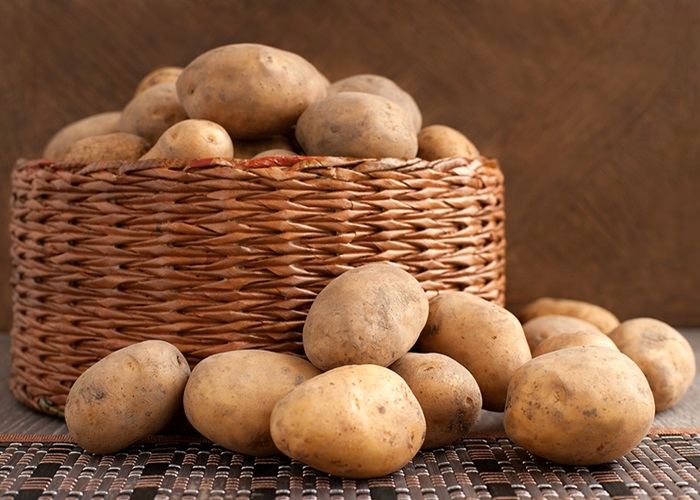Potatoes are a staple food in many cultures, prized for their versatility and satisfying flavor. However, concerns have arisen about their impact on blood sugar levels, especially for individuals with diabetes or those looking to manage glucose spikes. This article explores the relationship between potatoes and blood sugar, examining different types of potatoes, cooking methods, and cultural significance. Whether you’re curious about how potatoes affect your health or want to learn more about this popular tuber, this guide will provide valuable insights.
Understanding the Glycemic Index (GI) of Potatoes
The glycemic index measures how quickly foods raise blood sugar levels. Foods with a high GI cause rapid spikes in glucose, while low-GI foods lead to a slower, more stable increase. Potatoes generally have a medium to high GI, depending on variety and preparation method. White potatoes, for instance, tend to have a higher GI than sweet potatoes or red-skinned varieties. The way potatoes are cooked can also influence their GI: boiling usually results in a lower GI compared to baking or frying, which can elevate it.
Do Potatoes Cause Blood Sugar Spikes?
Yes, potatoes can cause blood sugar spikes, particularly if consumed in large quantities or as part of meals rich in refined carbohydrates. However, not all potatoes behave the same way:
White Potatoes: These are typically higher on the glycemic index, leading to quicker rises in blood sugar. Consuming them with fats or proteins can slow down digestion and mitigate this effect.
Sweet Potatoes: Generally lower on the glycemic index, sweet potatoes release sugars more gradually into the bloodstream. They contain more fiber and antioxidants, which contribute to better blood sugar control.
Red-Skinned Potatoes: Often having a slightly lower GI than white potatoes, they offer a moderate impact on blood sugar when eaten in reasonable portions.
Factors Influencing Blood Sugar Response
Several factors determine how potatoes affect blood sugar levels:
Portion Size: Larger servings of any type of potato can lead to significant blood sugar spikes. Controlling portion sizes is crucial for managing these effects. Smaller portions help maintain stable glucose levels without sacrificing the enjoyment of potatoes.
Cooking Method: How potatoes are prepared can greatly alter their impact on blood sugar. Boiling or steaming tends to preserve more resistant starch, which slows digestion and reduces the spike. Frying or roasting at high temperatures can increase the GI by making starches more readily digestible.
Additions and Pairings: Combining potatoes with other foods can influence blood sugar response. Eating potatoes alongside sources of fat, protein, or fiber can delay gastric emptying and lessen the rise in blood glucose. For example, adding olive oil, lean meats, or leafy greens to a potato dish can create a more balanced meal.
Cultural Significance of Potatoes
Potatoes hold an important place in various cultures around the world. In European cuisine, they form the backbone of hearty dishes like French fries, German kartoffelpüree (mashed potatoes), and Irish colcannon. Each region has its own traditions surrounding potato preparation, reflecting local ingredients and cooking techniques.
In South American countries, where potatoes originated, they are celebrated in diverse forms—from Andean chuño (freeze-dried potatoes) to Peruvian causa (a layered dish with mashed potatoes). These preparations highlight the adaptability of potatoes to different climates and culinary preferences.
In North America, potatoes are often associated with comfort foods such as baked potatoes, hash browns, and potato salads. They play a central role in holiday feasts and everyday meals, symbolizing warmth and sustenance. The cultural importance of potatoes extends beyond mere sustenance; they connect people to their heritage and community.
Healthy Potato Recipes
Preparing potatoes in healthier ways can reduce their impact on blood sugar. Here’s a recipe for a nutritious roasted sweet potato salad:
Ingredients:
- 2 medium sweet potatoes
- 1 tablespoon olive oil
- Salt and pepper, to taste
- 1 cup mixed greens
- 1/4 cup chopped walnuts
- 1/4 cup crumbled feta cheese
- 2 tablespoons balsamic vinegar
Instructions: Preheat oven to 400°F (200°C). Peel and dice sweet potatoes into bite-sized pieces. Toss with olive oil, salt, and pepper. Spread on a baking sheet and roast for 25 minutes or until tender. In a large bowl, combine roasted sweet potatoes with mixed greens, walnuts, and feta cheese. Drizzle with balsamic vinegar and toss gently to combine. Serve warm or at room temperature.
Conclusion
Potatoes can indeed cause blood sugar spikes, but this effect varies based on type, portion size, cooking method, and what they’re paired with. By choosing varieties like sweet or red-skinned potatoes, controlling serving sizes, and preparing them through healthier methods, you can enjoy this versatile vegetable while maintaining stable glucose levels. Understanding the cultural significance of potatoes enriches our appreciation for traditional wisdom in nutrition. Homemade recipes empower us to customize our diets according to specific needs. Ultimately, adopting mindful practices ensures that potatoes remain a delightful and nutritious part of a balanced diet. Through thoughtful selection and preparation, we can continue to savor the pleasure of potatoes as part of a healthy lifestyle.
Related topics:


